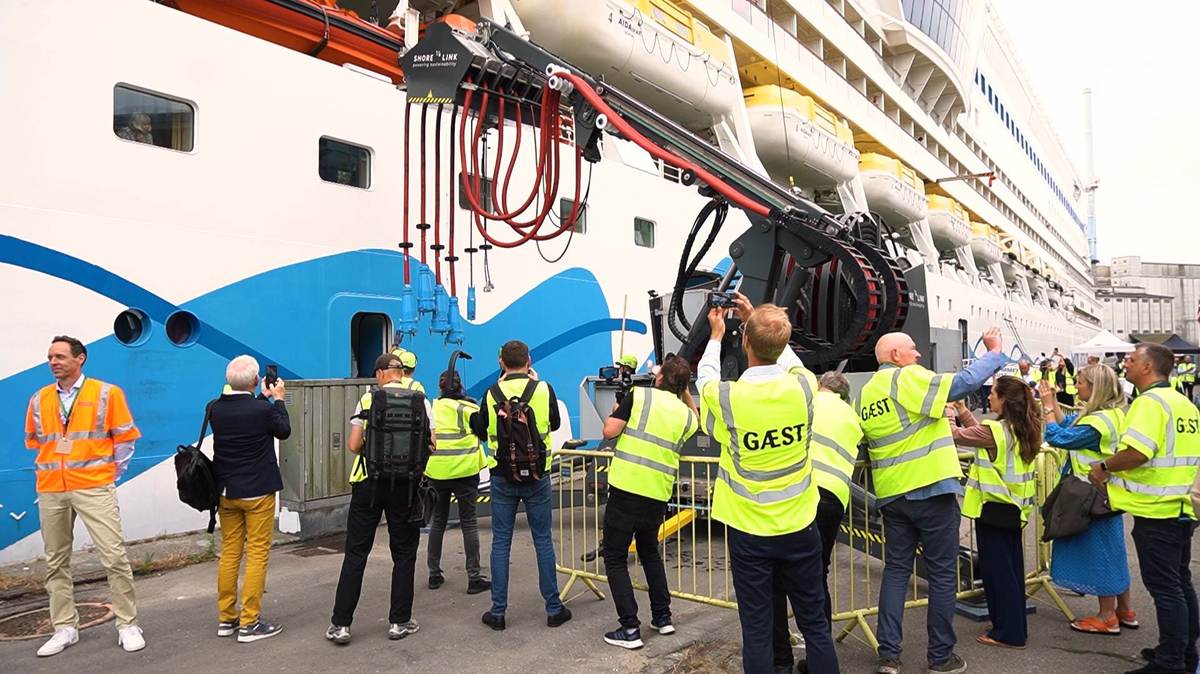Ports and governments pursuing shore power to reduce emission at ports
Various port agencies globally are sparing no effort to encourage shipowners to adopt the use of shore power when berthed.
 PHOTO: Port of Aarhus launched shore power facility in June 2023. Port of Aarhus
PHOTO: Port of Aarhus launched shore power facility in June 2023. Port of Aarhus
Shore power, also known as cold ironing, is the process of supplying electrical power to a ship while it is berthed at a port. Instead of using its own onboard generators, the ship connects to the local electrical grid onshore. This helps reduce emissions, improve air quality, and decrease noise pollution in port areas, contributing to environmental sustainability in maritime operations.
Use of shore power can “reduce emissions by up to 98%, depending on the mix of energy sources, while a ship is in port,” the Cruise Lines International Association says.
According to the classification society DNV, there are currently 118 facilities across ports globally offering shore power to vessels, with 47 more planned and four under discussion.
Efforts of various port agencies
Various government and port agencies have been taking steps to persuade shipowners and operators to embrace the use of shore power while berthing.
This month, the Danish port of Aarhus announced that it will levy an additional charge on cruise ships for not connecting to shore power from 2024.
Under the new model, the Port of Aarhus will impose an additional charge of 0.75 DKK ($0.11) per gross ton on cruise ships calling at the cruise ship quay in the port. This will lead to an additional fee ranging between DKK 50,000 to DKK 75,000 (around $7,000-11,000) per cruise ship. The new fee model will come into effect from 1 January 2024.
“There is no doubt that the possibility of connecting to shore power is an important parameter for the shipping companies now and in the future. We want to drive this development also at the European level, and we do so with our new fee model, making it cheaper to be green and more expensive to be black,” Port of Aarhus’ chief executive Thomas Haber Borch says.
Several ports and authorities are investing in shore power to reduce air and noise pollution in port areas. Also this month, Dutch maritime infrastructure firm Boskalis commissioned a large-scale shore power facility at the port of Rotterdam and the US Department of Transportation (DoT) granted funds to the San Diego shore power project.
In October, the Port of Galveston secured a government grant for developing a shore power project at Galveston. Meanwhile, in September, the German seaport of Kiel expanded its shore power capabilities and the port of Aberdeen received funding from the UK Government to develop a large-scale shore power system in Scotland.
Shore power gaining steam
The Port of Seattle reported a record 2023 cruise season with 291 cruise ships visiting the port between April and October. With an increase in number of cruise ships visiting the port, the port experienced an increase in the use of shore power as well.
“More than one-third of cruise ships utilised shore power at Smith Cove Cruise Terminal, setting a record number of plug-ins for a Seattle cruise season,” the Port of Seattle stated.
The dark reality of shore power
An investigation conducted by socio-political media outlet openDemocracy revealed that only one in ten cruise ships has plugged into shore power at Southampton, the UK's biggest cruise port, since it became available last year.
According to Associated British Ports (ABP), an evaluation of ship schedules at Southampton port revealed that between April 2022 and July 2023, there were approximately 300 days when at least one cruise ship was docked. However, during this period, shore power was only used on 71 occasions.
This highlights the challenges and low uptake of shore power in the maritime industry, emphasising the need for increased awareness, incentives and collaborative efforts to promote shore power.
By Tuhin Roy
Please get in touch with comments or additional info to news@engine.online





